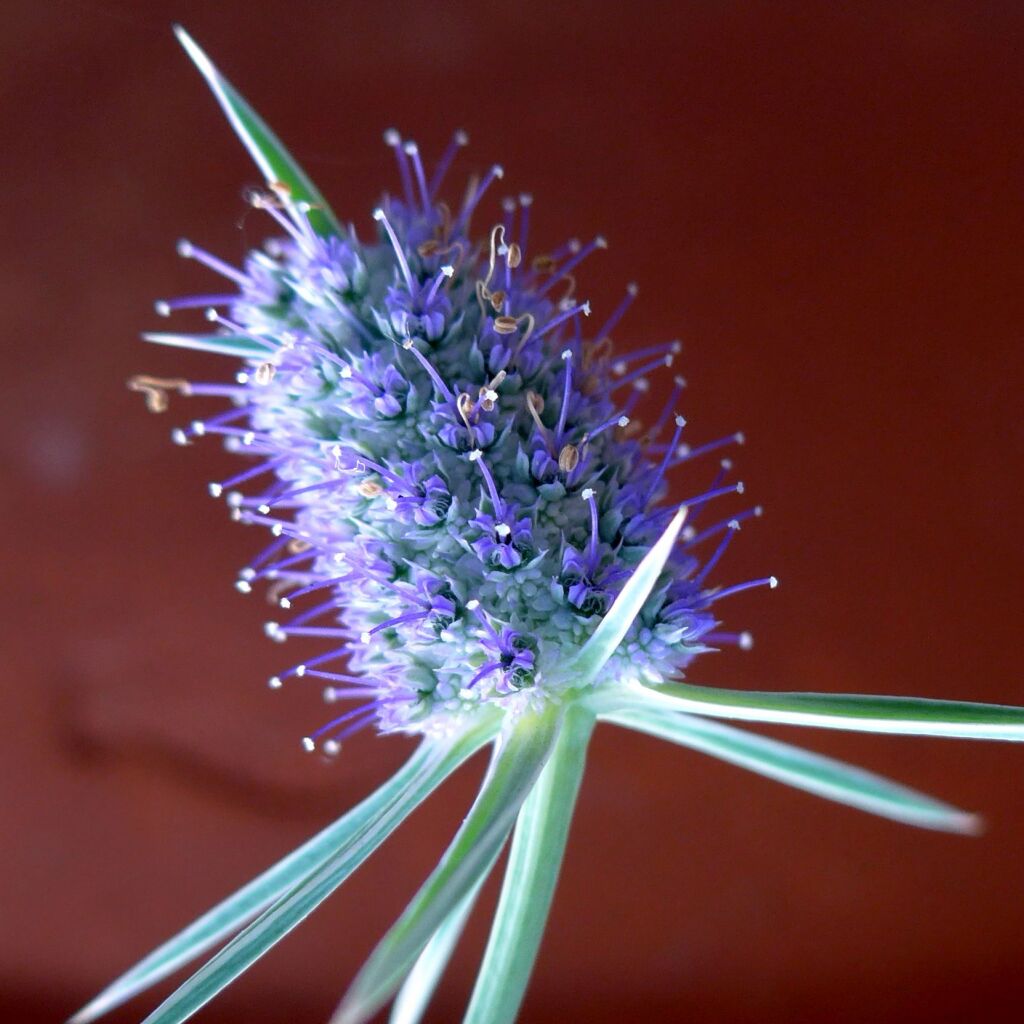Eryngium
Glabrous annual, biennial or perennial spiny herbs with taproot, tubers or rhizomes. Basal leaves often with sharp teeth or spines, linear to triangular-ovate, pinnatifid, pinnate, bipinnate or palmately lobed or dissected, sometimes entire, cylindric and septate. Flowering stems with mostly tripartite, pinnatifid or pinnate spiny leaves and/or bracts. Flowers bisexual, sessile, few-many in hemispheric to cylindric heads in cymes, racemes or panicles; each flower subtended by a bracteole, the outer bracteoles often forming a clearly defined spiny involucre; calyx-lobes prominent, acute, persistent in fruit; petals narrow, whitish to blue or purple, with a long inflexed, obtuse or variously pointed or fringed apex, appearing emarginate at the bend; styles surrounded near the base by a raised, lobed nectary disc. Fruit obovoid or round, mostly covered with vesicular scales or tubercled; vittae few, adjacent to the obscurely ribbed edges of the fruit; carpophore absent; commissure broad or narrow with straight or curved edges; seed roughly rectangular or round in mid cross-section.
About 230 species, native to the Americas, Eurasia, North Africa, Australia and New Zealand; c. 15 species (3 naturalized) in Australia, one cultivated as culinary herb.
In the key to species, measurements of flowering heads do not include bracteoles.
Michael, P.W. (1999). Eryngium. In: Walsh, N.G.; Entwisle, T.J., Flora of Victoria Vol. 4, Cornaceae to Asteraceae, pp. 260–263. Inkata Press, Melbourne.
 Spinning
Spinning


